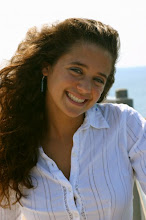The day The World Trade Center collapsed I was no where near New York City. I witness everything from my living room in Puerto Rico. After an NYU journalism class field trip to The Tribute World Trade Center Visitor Center, 9/11 finally seems real.
The center's exhibits and video allowed me to see what the WTC was like pre-attack. But it was the aftermath footage that really put the gravity of the tragedy into perspective. The audio tour of Ground Zero and collection of photos and relics helped me imagine what experiencing 9/11 must have been like.
It was at the center that I met Tracy Gazzani and learned about her son.
Terry Gazzani worked for Cantor Fitzgerald and was in the North Tower when the first plane hit. He was above the zone of impact and so cut off from any possible escape. Terry lost his life leaving his parents in a situation that Tracy says, “gets different, but doesn’t get better.”
Tracy is a docent at the Tribute WTC Visitor Center. She’ll have been there for a year at the end of November. Volunteering is her way getting a move on with life and giving thanks to all who helped during times of darkness.
Listening to Tracy talk about the last words she exchanged with her son put a personal touch on a tragedy that for so long to me was faceless.
Distinguished firefighter Lee Ielpi is another who lost a child on Sept. 11. “Dad we are going to the World Trade Center” were the last words Ielpi heard his son, who was also a firefighter, speak through the phone. Jonathan’s body was found in one piece. Ielpi considered it a blessing considering the many that were never found or were found in pieces. Jonathan’s helmet and jacket are proudly on display at the Visitor Center. Only 12-15 full helmets were found of the 343 fallen firefighters.
During the Ground Zero audio tour I couldn’t help but feel grateful that I had not been faced with such a life altering event. Would I have been strong enough to deal with it? Would moving on have been impossible? I don’t know, but the people speaking through my headset had done it. Never had I ever been flooded with such admiration.
In the gallery, photos of victims covered the walls. Faces beamed at me, captured in happy moments; faces I never knew and never will know. I felt pain for the things they never did and the goodbyes they didn’t get to say. I imagined how horrible it would be to see my mother or sister’s face on that wall staring back at me.
For Tracy that’s a daily reality. Her son’s photo is on that wall as well as on the ID holder around her neck. The pictures are there as a reminder, as is the rest of the center. “We must let people know how it affected us,” said Tracy.
At the end of the visit I left the center and continued with my day. Routine occupations and responsibilities pushed my visit to the Center to the back of my mind. How fortunate, I thought, to be able to remember painful things by choice.






